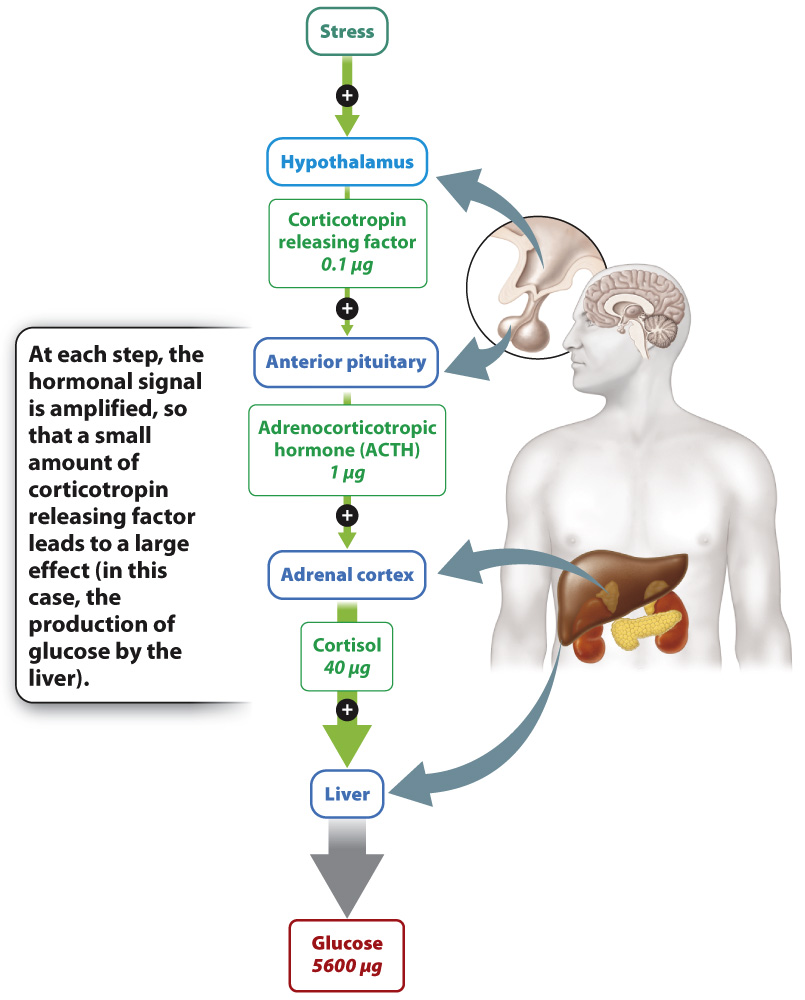Hormonal signals are amplified to strengthen their effect.
Hormones are typically released in small amounts. So how is it possible for them to have large effects on the overall physiology of an organism? The answer is that hormone signals are amplified (Chapter 9). Amplification occurs during a series of signaling steps, both before the hormone binds to a cell receptor and inside the cell afterward. The first set of signaling steps is the passing of a signal from one endocrine gland to the next in a hormonal pathway, and the second set is signal transduction in the target cell. Signals are amplified at each step of the pathway, resulting in a large effect on the target cell or organ.
Hormonal signaling pathways between endocrine glands and tissues are often referred to as endocrine axes. In vertebrates, hormonal signals are amplified along a pathway called the hypothalamic–

816
Hormones released by the anterior pituitary gland in turn bind cell receptors in the target organ. In this case, ACTH acts on cells of the adrenal cortex, stimulating their secretion of the hormone cortisol. Cortisol acts on many different cells and tissues in the body, causing what is known as an acute stress response. Among its effects, it causes the liver to convert glycogen and amino acids to glucose. This action yields 56,000 times more glucose than the initial weight of releasing factors secreted by the hypothalamus.
We can also see an example of amplification in invertebrates in the regulation of insect molting and metamorphosis (see Fig. 38.3). This pathway has two signaling steps in which an endocrine gland releases a hormone. First, the brain releases the hormone PTTH. That hormone signals the prothoracic gland, leading to the release of a much larger amount of ecdysone, the hormone that regulates growth and metamorphosis of the insect’s body. Ecdysone in turn binds to cell receptors in the target organ. Signaling cascades within these cells further amplify the hormone signal. Thus, amplification applies both to signal transduction cascades within a cell and to the chemical signals that are transmitted as endocrine hormones between glands and tissues.
817